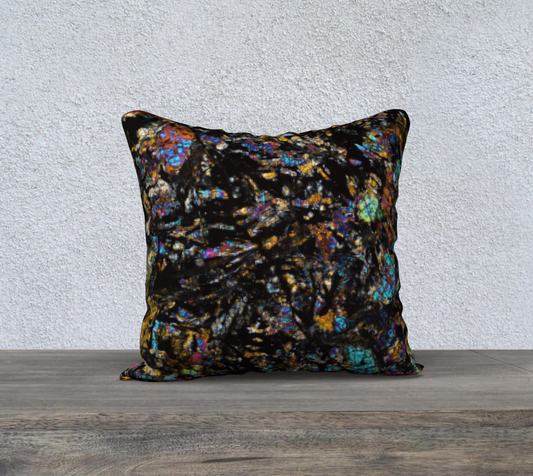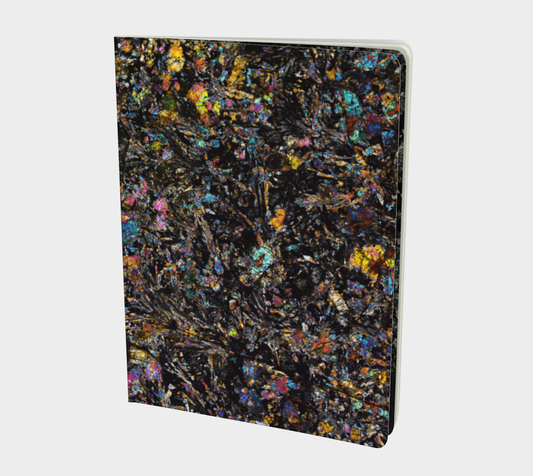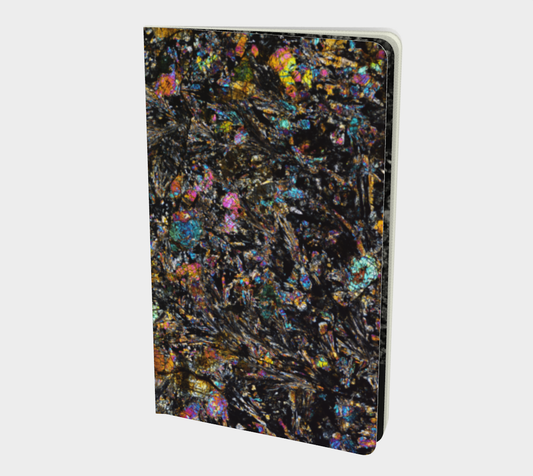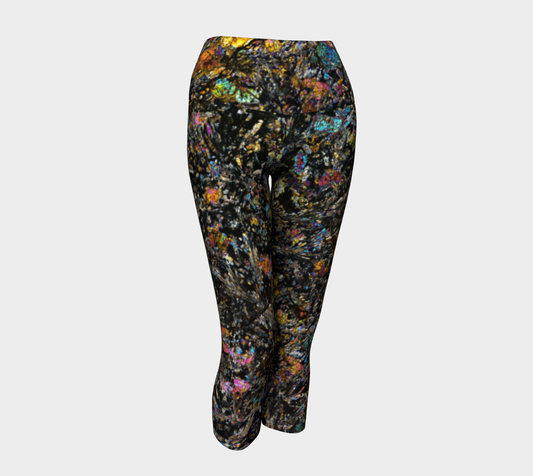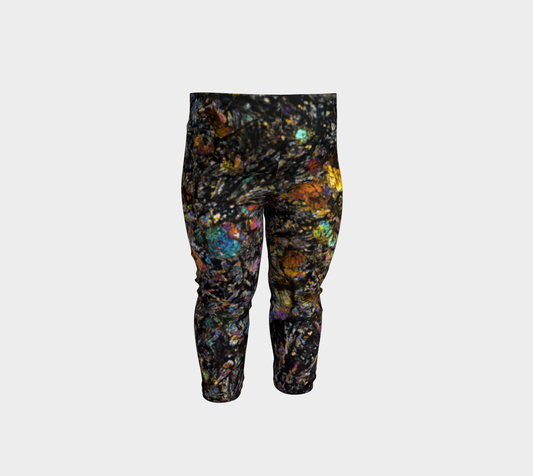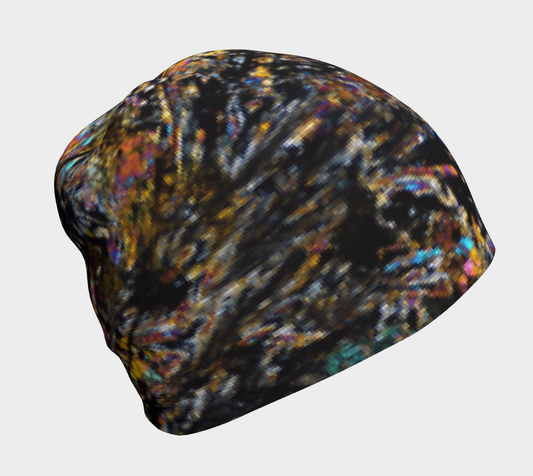Collection: Dhofar 287 Lunar Basalt Meteorite
The Story of Dhofar 287
Found deep in the trackless deserts of Oman in 2001, Dhofar 287 is a fairly non-descript six ounce chunk of the Moon. Until you look inside, that is. Of the tens of thousands of meteorites identified here on Earth, the number of confirmed lunars is less than 120, and this is a basalt, with less than 20 lunar brethren. It is, however, very typical of the Apollo moon rock collection, with chemical similarities to Apollo 12 basalts and Apollo 15 green glasses.
Lunar basalts erupted into near-side, continent-sized circular basins created by cataclysmic impact into the primitive lunar crust soon after the moon formed 4.5 billion years ago. While the lunar mantle melted over the next 1.5 billion years, buoyant magmas made it through fracture systems to the lowest points, erupting 1-2 kilometer thick flows of runny black basalt. This particular lava hit the lunar surface about 3.5 billion years ago, before being launched to the southern Arabian peninsula in the past few thousand.
Under the Microscope

In common with terrestrial basalts, these rocks are dark and featureless from the outside, due to their very fine-grained crystallinity. But once a geologist applies her saw and creates a wafer-like thin section epoxied to a glass slide, a microscope reveals its stunning inner panorama. Again, in common with their terrestrial counterparts, the magnified, polarized images of Dhofar 287 show interlocking crystals of multi-hued pyroxene and dark grey plagioclase in a variety of textural relationships. Unlike terrestrial basalt, however, no water was present during crystallization and the subsequent billions of years at the surface…meaning no alteration to clay minerals, ubiquitous in all but the most recently erupted terran lavas. This makes for exquisite petrological detail in a moon rock formed when the solar system was only 30% its present age.
-
Dhofar 287 Lunar Basalt Meteorite stainless steel tumbler matte
Regular price $38.00 USDRegular priceUnit price / per -
Dhofar 287 Lunar Basalt Meteorite vegan leather tote bag
Regular price $96.00 USDRegular priceUnit price / per -
Dhofar 287 Lunar Basalt Meteorite 18"x18" pillow case
Regular price $32.00 USDRegular priceUnit price / per -
Dhofar 287 Lunar Basalt Meteorite softcover journal 7.25" x 10"
Regular price $20.00 USDRegular priceUnit price / per -
Dhofar 287 Lunar Basalt Meteorite softcover journal 5" x 8.25"
Regular price $18.00 USDRegular priceUnit price / per -
Dhofar 287 Lunar Basalt Meteorite yoga leggings
Regular price $60.00 USDRegular priceUnit price / per -
Dhofar 287 Lunar Basalt Meteorite yoga capris
Regular price $60.00 USDRegular priceUnit price / per -
Dhofar 287 Lunar Basalt Meteorite youth leggings
Regular price $32.00 USDRegular priceUnit price / per -
Dhofar 287 Lunar Basalt Meteorite baby leggings
Regular price $28.00 USDRegular priceUnit price / per -
Dhofar 287 Lunar Basalt Meteorite beanie
Regular price $32.00 USDRegular priceUnit price / per -
Dhofar 287 Lunar Basalt Meteorite fitted tank top
Regular price $36.00 USDRegular priceUnit price / per -
Dhofar 287 Lunar Basalt Meteorite flare skirt
Regular price $46.00 USDRegular priceUnit price / per -
Dhofar 287 Lunar Basalt Meteorite wrap skirt
Regular price $46.00 USDRegular priceUnit price / per -
Dhofar 287 Lunar Basalt Meteorite square scarf
Regular price From $25.00 USDRegular priceUnit price / per -
Dhofar 287 Lunar Basalt Meteorite long scarf
Regular price From $30.00 USDRegular priceUnit price / per -
Dhofar 287 Lunar Basalt Meteorite headband
Regular price $16.00 USDRegular priceUnit price / per



